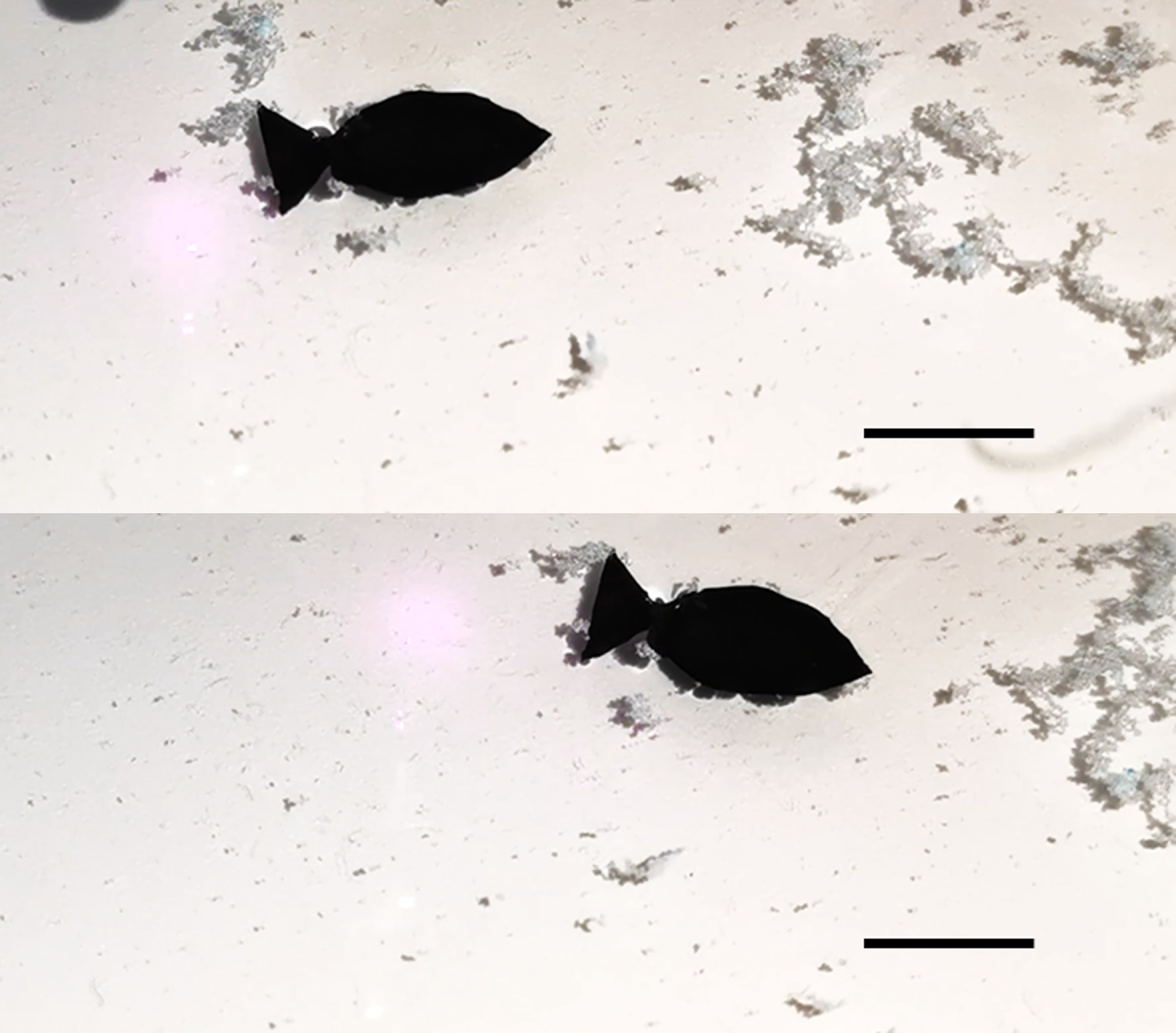The tiny fish-shaped robot removing microplastics from the sea
Small, flexible and self-propelled, the device is capable of reaching cracks and crevices where particles often end up, as Tom Batchelor reports


A tiny robot fish that can “swim” around polluted waterways picking up and removing microplastics has been developed by researchers in China.
The light-activated robot is small, flexible and self-propelled, making it well-suited for reaching cracks and crevices where microplastics often end up.
The researchers demonstrated how their 15mm swimming fish robot could repeatedly absorb nearby polystyrene microplastics and transport them elsewhere.
The team, led by researchers at the Polymer Research Institute of Sichuan University in Chengdu and colleagues at Sichuan Agricultural University and Northwestern Polytechnical University in Xi’an, said their robot design was also capable of healing itself after being cut, so as to maintain its ability to adsorb microplastics.
This, they said, made the “fish” suitable for extracting microplastics from even the harshest aquatic environments, such as busy rivers and congested shipping channels.
The researchers noted that traditional materials used for similar robots were damaged easily while operating underwater.
Instead, they used a material inspired by mother-of-pearl, also known as nacre, a strong and flexible material found on the inside surface of clam shells.
Rapidly turning a near-infrared light laser on and off at a fish’s tail caused it to flap, propelling the robot forward at a speed of 2.67 body lengths per second, faster than previously reported for other soft swimming robots and about the same speed as phytoplankton moving in water.
The invention was detailed in a research paper in the American Chemical Society’s journal, Nano Letters.
Join our commenting forum
Join thought-provoking conversations, follow other Independent readers and see their replies
Comments
Bookmark popover
Removed from bookmarks